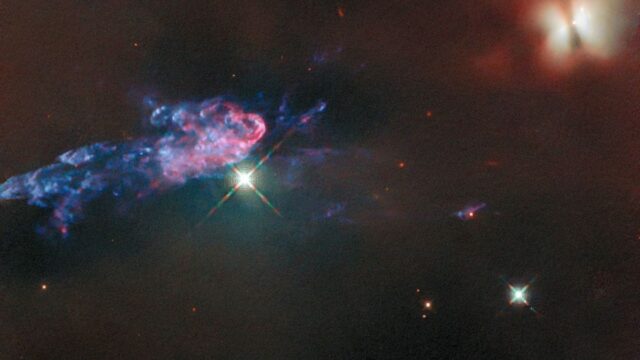The Hubble Space Telescope has captured an extraordinary view of the Orion Nebula, the closest star-forming region to Earth, located approximately 1,500 light-years away. This new image highlights the protostars HOPS 150 and HOPS 153, which are playing an important role in reshaping their environment. The nebula, visible to the naked eye near Orion’s belt, is illuminated by the activity of these young stars, offering scientists a glimpse into the early stages of star formation.
Protostars and their evolution
According According to the Herschel Orion Protostar Survey, carried out using ESA’s Herschel Space Observatory, HOPS 150 is a binary star system comprising two young stars surrounded by dust disks. These protostars are still accumulating materials from their surroundings, with a huge cloud of gas and dust stretching more than 2,000 times the distance between Earth and the Sun fueling their growth. As reported by NASA, observations of the emitted infrared light suggest that HOPS 150 is in the middle of its evolution into a mature star system.
HOPS 153 jets transforming the nebula
The narrow jet seen in the image originates from HOPS 153, another protostar located nearby but still embedded in dense gasoline. Although HOPS 153 remains obscured by its birth nebula, the impact of the jet on the surrounding material is clearly seen. This jet excavates regions in the interstellar medium, releasing energy and creating perturbations that can influence the formation of nearby stars. Interactions between gas inputs and outputs are crucial to understanding how young stars shape their environments.
The findings, supported by data from NASA and ESA, provide insights into how protostars transform into full-blown stars, altering their environment and impacting the interstellar medium. These processes contain vital clues about the dynamics of star formation in our galaxy.
(Except for the headline, this story has not been edited by NDTV staff and is published from a press release)





